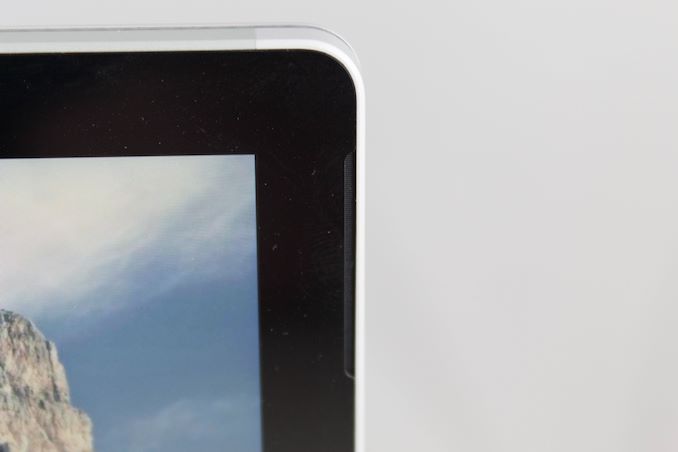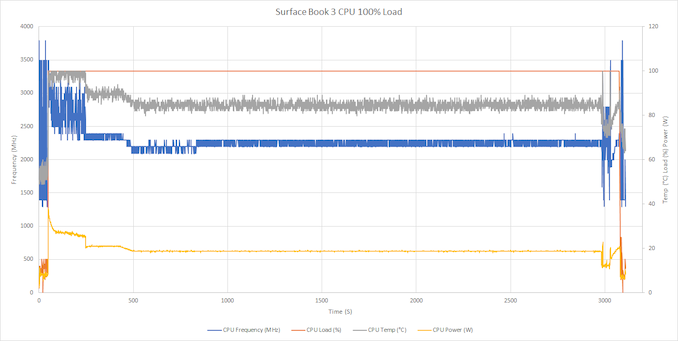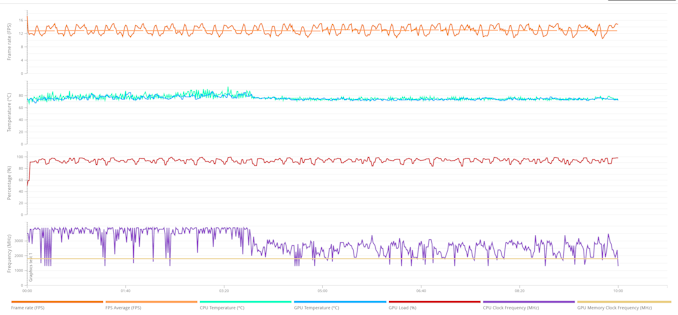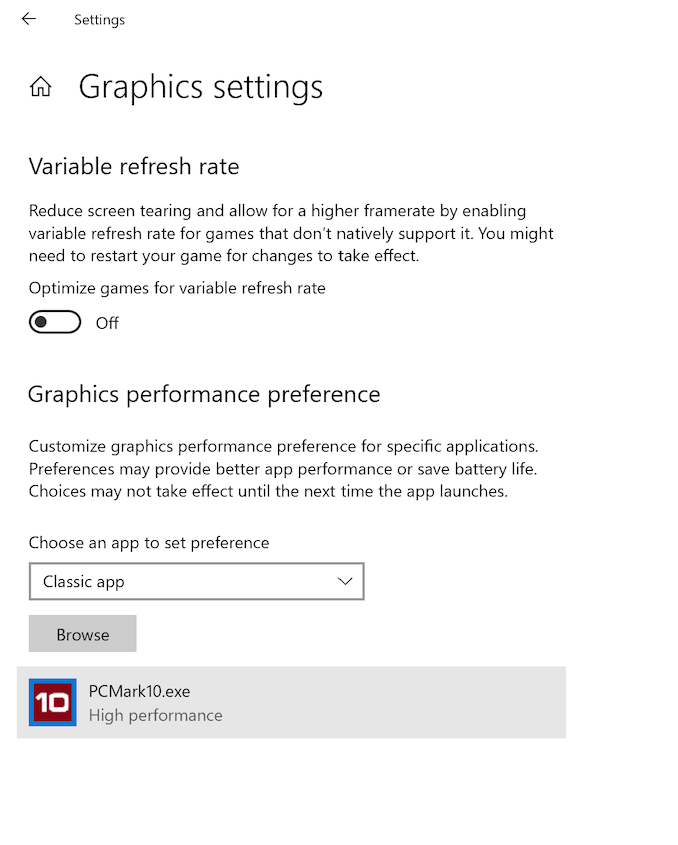The Microsoft Surface Book 3 (15-Inch) Review: A Refreshing Dip Into Ice Lake
by Brett Howse on June 3, 2020 9:00 AM ESTWireless
For the past several generations, Microsoft has leveraged Marvell networking adapters, unless the device had LTE, in which case they tended to use Qualcomm. Unfortunately, both were prone to unreliability and could not keep up with sustained transfer speeds like the latest Intel wireless solutions. Now that Wi-Fi 6 is upon us, the trend seems to be for everyone to use Intel wireless, including the Surface lineup. The Surface Book 3 features the Intel AX201 Wi-Fi 6 network adapter, which is a 2x2:2 design with the full 160 MHz channel width support.

The speeds are fantastic, and Intel has continued offering their very solid drivers too, so reliability has been top-notch. Although competition is always welcome, in the PC space there is really one standout wireless solution, and this is it.
Audio
Microsoft outfits the Surface Book 3 with front-facing stereo speakers featuring Dolby Atmos. As is typical of the Surface speakers, they blend almost seamlessly into the display bezel meaning they are almost invisible to the eye. There are also dual far-field microphones for dictation, or conferencing.
Sound quality of the speakers is excellent, and although they only achieved around 73dB(A) of SPL, the range of the speakers were quite impressive.
Thermals
The two-zone thermals of the Surface Book 3 mean that the temperature of the CPU will not impact the GPU, and vice versa. It also means that Microsoft has more room for a larger GPU, which we’ve seen the results of in our GPU testing. The CPU side with the Core i7-1065G7 has a thermal design of 15 Watts, meaning the processor is designed for a stead-state thermal load of 15 Watts, but with Intel’s aggressive Turbo, processors will draw much more than that for short bursts. On the GPU side, NVIDIA rates the GTX 1660 Ti Max-Q at between 65 and 80 Watts, depending on implementation.
The Surface Book 3 was subjected to a full CPU stress test, while monitoring the frequency and power draw of the processor. Interestingly, the processor very quickly bumps into the 100°C thermal limit, causing the processor to throttle at the start of the test during the PL1 stage of the CPU, which peaks at about 38 Watts maximum and 100°C. When PL1 ends and the processor moves into PL2, the power draw drops to a steady state value of around 19 Watts. So the Surface Book 3 can easily handle the full TDP of the processor, but it does not quite have enough to handle the full limit Microsoft implemented for PL1. This likely means there is not enough heatsink mass to handle the initial burst, although there is enough dissipation to handle the processor under load. As a comparison point, the Surface Laptop 3 with the same processor managed about 43 Watts at PL1 and it never quite reached the 100°C thermal cut-off, and then had a steady state of over 20 Watts. The overall cooling system is unsurprisingly not quite as capable as a more traditional laptop design, at least for the processor.
On the GPU front the Surface Book 3 also performs quite well. Unfortunately, our normal data logging tool was unable to read the GTX 1660 Ti, so instead we ran 20 loops of the 3DMark Fire Strike stress test. The GPU temperatures peaked at around 85° and settled in around 75°, with consistent FPS throughout the 20 loops.
One of the most amazing things about the Surface Book 3 thermals is how much performance there is considering the noise level. At full load after over an hour of use, the Surface Book 3 registered at only 43 dB(A) measured one inch over the trackpad. The tone of the noise is also low enough that it is very easy to live with. Despite not being able to get peak performance out of the CPU for a short window, the cooling system still does a great job and without much noise at all.
Software
One of the best perks of the Surface lineup is that there is no extra software installed to deal with, unless you include the unfortunate fluff that has started shipping directly in Windows. But as Surface is Microsoft’s device lineup, the Surface team also tends to bring new tech to Windows. For the Surface Laptop 3, that is the ability to choose the graphics adapter for each program directly in the Windows Settings. Previously, the NVIDIA Control Panel was required.
Branding of classic applications and UWP applications aside, it is nice to see this brought into Settings since it would be available for all GPU vendors and not require a proprietary tool.
Microsoft also includes the Surface App where you can see details about your device, battery levels of connected Surface peripherals, and get support.
Most laptops ship with some sort of tool for this function now, but the Surface one definitely has more polish than most.















125 Comments
View All Comments
eastcoast_pete - Wednesday, June 3, 2020 - link
Thanks Brett! Too bad that "refreshing dip into Ice Lake" requires such a deep dive into ones bank account! I really like the design, but a more affordable version would make the Surface Book form factor a lot more compelling.Redshirt4life - Wednesday, June 3, 2020 - link
I mean, it's a premium device. Sure they could've made it out of plastic and sourced bargain components, but then it wouldn't be a Surface. It wouldn't even be a decent laptop. Besides the Book family has always had excellent sales periodically. If you don't like the entry price for quality and innovation, that's your choice, but making snarky comments about it isn't compelling at all.s.yu - Thursday, June 4, 2020 - link
lmfao, quality and innovation. The SP series has stagnated so much people are calling the SP7 a "SP4.99", nor is it known for its reliability or build quality. The XPS 13 2-in-1 has comparable (arguably better) build quality, a much bigger battery, a CPU that boosts far better(hardly throttles while SP7 throttles 30%), and its price is still about a tier below the spec-matched SP7 accounting for the pricing and SP7's mandatory keyboard and pen purchases(both included in the XPS, keyboard obviously, but the stylus also comes bundled). Better yet, it's easy to come across factory refurbished XPS13 that come with extended warranty, but not SP7, if they even sell those at all.ReverendDC - Sunday, June 7, 2020 - link
...and the XPS doesn't detach at all to a straight tablet, double the overall weight, fans, etc. iPads haven't changed much in 5 years. Laptops are still clamshells. And your "minor" spec bumps include doubling cores or threads (or both), WiFi 6, Intel ax adapters, USB - C, 50% better graphics output, instant on.... Etc, etc.... Yes, DEFINITELY NOT EXACTLY WHAT SURFACE FANS HAVE BEEN REQUESTING. How dare Microsoft listen to their customers!ArcadeEngineer - Thursday, June 4, 2020 - link
Why are we still paying a big price for 'innovation' in a product that's only had spec bumps in four years?Deicidium369 - Friday, June 5, 2020 - link
has the laptop surface been out for 4 years?Spunjji - Thursday, June 4, 2020 - link
You're pounding on the concept of "premium = expensive" to avoid discussing the fact that the design is no longer innovative, has been plagued by performance, stability and driver problems throughout its existence, and - as others have noted - you can get equivalent or better quality for less.A price drop now that they've presumably amortised the costs of the design would make any and/or all of those concerns more palatable.
PeachNCream - Thursday, June 4, 2020 - link
Agreed that the hardware is interesting, but the price is quite high. As always. someone or some company will make purchases, but for the rest of us that like seeing their net worth go up rather than own status symbol hardware, there are alternatives.Deicidium369 - Friday, June 5, 2020 - link
those two are not mutually exclusivePeachNCream - Friday, June 5, 2020 - link
You have absolutely no idea and that much is painfully obvious from your comments.